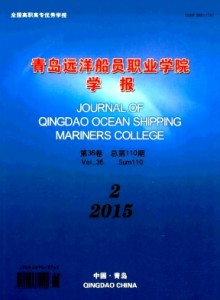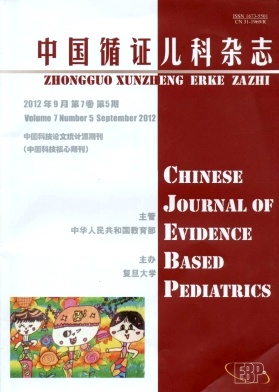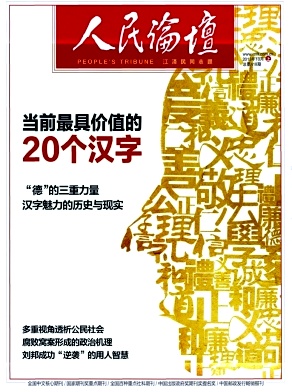授予学位单位:内蒙古大学
授予时间:1997年7月
二级学科名称:专门史
指导教师:亦邻真才
博士论文题目:十五世纪前后蒙古政局、部落诸问题研究
摘 要
明代蒙古史是蒙古史研究中的薄弱环节,国内研究落后于国外(特别是日本)。日本学者和田清《东亚史研究·蒙古篇》奠定了明代蒙古史框架。但是,由于时代和个人条件的局限,和田清未能充分利用丰富的蒙文史料,影响了研究的深入,致使一些错误的观点长期在学术界流行。近年来国内的有关研究虽在某些方面有所突破,但进展缓慢,在史料运用上存在着与和田相同的问题。充分发掘和利用蒙文史料,进行蒙汉文史料对比研究,已成为明代蒙古史研究进一步深入的关键。本文在继承前人研究成果的基础上,充分发掘和利用了蒙文史料,通过蒙汉文史料的勘比、对照,对15?/FONT>16世纪蒙古政局、部落变迁等问题进行了更为深入的研究。全文约二十万字,共分三章。
第一章《从元朝灭亡到达延时代的蒙古政局》概述了14世纪末至16世纪初的蒙古政治史。15世纪初蒙古分裂为东西两大部。东蒙古以元朝皇室私属人口为核心形成。成吉思汗诸弟后裔统治下的往流各部及窝阔台后裔鬼力赤、阿台部众也属东蒙古。西蒙古又称瓦剌,主要以原阿里不哥属民构成。导致蒙古分裂的内在原因是北迁的元室与以阿里不哥后裔为代表的蒙古本土贵族之间的矛盾与斗争。蒙古分裂后以阿鲁台为代表的北元宫廷贵族和以马哈木、脱欢为代表的蒙古本土贵族为争夺把持北元朝政的权力而进行了长期的厮杀。在15世纪30?/FONT>50年代,东西蒙古贵族结成政治联盟,蒙古实现了短暂的表面的统一。但终因两大集团的矛盾与斗争,蒙古又陷入了分裂。
第二章《达延汗六万户的变迁》系统地研究了北元大汗直属六万户的起源、形成及其演变。六大部中察罕儿万户全称为”好陈察罕儿”,起源于成吉思汗幼子拖雷及妻唆鲁禾帖尼的属民。北元大汗脱脱不花、满都鲁、达延汗等直接统治着察罕儿万户。16世纪中叶以后察罕儿万户以兴安岭为界分属左右翼。左翼又被称为山阳察罕儿,由阿剌处、敖汉、奈曼、兀鲁四大鄂托克组成。右翼又被称为阿鲁(山阴)察罕儿,由浩齐特、乌珠穆沁、苏尼特、克什旦四大鄂托克组成。阿儿秃斯万户起源于成吉思汗四大斡耳朵属民。元代成吉思汗四大斡耳朵由晋王统领、而阿儿秃斯万户的统治者仍称晋王-吉囊。达延汗的祖先、阿八丁王及孛罗忽吉囊是早期阿儿秃斯万户的统治者。满官嗔-土默特万户起源于兀者人。原属成吉思汗弟哈赤温后裔瘸太子统领。满都鲁杀死瘸太子后吞并了满官嗔-土默特部。满官嗔意为”类蒙古”,土默特则是”多罗土蛮”的省称。应绍不万户的主体是由元代侍卫亲军阿速卫、钦察卫后人组成。15世纪前半,在北元大汗直属各部中应绍不万户最为强大。15世纪中叶后应绍不万户的统治权先后落入乜克力贵族伯加思兰、亦思马因及瓦剌也先孙亦不剌等人手中。兀良哈万户起源于肯特山的兀良哈,他们原是成吉思汗陵寝的守护者。罕哈万户得名于罕哈河。札剌亦儿鄂托克在罕哈万户各鄂托克中最为强大。
第三章《往流和往流四万户》对成吉思汗四个弟弟的后裔部众总称、别称、万户名称及统治者王号进行了考证。成吉思汗四个弟弟即元代东道诸王后裔部众被统称为往流,又称阿巴噶或阿鲁蒙古。他们由好儿陈万户、也可万户、察罕万户、山阳(兀者)万户组成,各万户的统治者一直到15世纪末还保留其祖先元代的王号:齐王(西王)、广宁王(黄苓王)、济南王(进王、郑王)、辽王(刘王)。
Studies on the Problems of Mongol’s Political Situation and Tribes around the Fifteenth Century
Inner Mongolia University Buyandelger
Abstract
The Mongolian history of the Ming Dynasty is a weak section in the studies of Mongolian history. The studies at home falls behind those in foreign nations, especially in Japan. Dr. Sei Wada, a Japanese scholar, laid the foundation of the Mongolian history during the Ming Dynasty in his Studies on the History of Far East. However, he was unable to use a great number of the historical materials in Mongolian so as to influence on further studies in the field because of the limitation of historical era and personal conditions. His wrong opinions in this field has spread in academic circles for a long time. In recent years, the related studies at home have been made a breakthrough in some respects, but the progress still is slow and there exist the problems as Dr. Sei Wada in the historical materials used. Therefore, It became the major link in the further studies that we explore and use the historical materials in Mongolian fully and carry out the comparative studies between Mongolian historical materials and Chinese-han ones. The thesis presented discusses the problems of the Mongol’s political situation and tribes around the fifteenth century through comparative studies between Mongolian historical materials and Chinese-han ones after former scholars’ achievements are carried forward and the historical materials in Mongolian are explored. The thesis all covers 200,000 words and is divided three chapters.
In the first chapter, The Political Situation from the Yuan Dynasty’ Collapse to Dayun Khan’s Era, outlines the Mongol political history from the late the fourteenth century to the early sixteenth century. Mongol was split into both the eastern part and western one. The eastern Mongols centered around the people attached to the imperial family of the Yuan Dynasty. So were the Ongligud’s tribes under the rule of the descendants of Chinggis Khan’s brothers and Goilinchi, and Atai’s tribes under the rule of Ogodei’ descendants. The western Mongols were called Oirads, who Mainly consisted of the people attached to Arigboge. The internal cause of Mongol split lies in the contradiction and struggle between the imperial family of Yuan Dynasty moving to the north and the native nobility at the head of Arigboge’s descendants. After Mongol split, the nobility of North-yuan court at the head of Arugtai went into battles with the ones at the head of Maqamu and Toqon for the political power of North-yuan for a long time. The nobility of the east and the west combined into a political alliance in the 30-50’s of the fifteenth century, which realized the short and outward Mongol’s unity . Nevertheless, Mongol fell into new split owing to the contradiction and struggle of the two political cliques.
In the second chapter, The Change of Dayun Khan’s Six Tumens, systematically studies on the origin, formation and change of six Tumens attached to North-yuan Great Khan directly. Chaqar Tumen among the six Tumens was called Qauchin-chaqar, which originated from the people attached to Toloi, the youngest son of Chinggis Khan and his wife, Sorqadani. The great Khans of North-yuan, Togtogbuqa, Mandulun and Dayun Khan, governed over Chaqar Tumen directly. Chaqar Tumen was divided into the Left and the Right Wing at the boundary of the Hsing-an Mountains after the sixteenth century. The Left Wing was called Olge ( the south of the mountain) chqar, which consisted of four Otogs such as Alaqchud, Auqan, Naiman and Urud. The Right Wing was called Aru ( the north of the mountain) chaqar, which consisted of four Otogs such as Qauchid, Ujimuchin, Sunid and Kesikten. Ordos Tumen originated from the people attached to Chinggis Khan’s four Great Ordos. The Jin-ong commanded Chinggis Khan’s four Great Ordos during the Yuan Dynasty and later the ruler of Ordos Tumen was still called Jin-ong ____ jinong. The ancestors of Dayun Khan, Agbarjin Jinong and Bolqu Jinong, all were the early rulers of Ordos Tumen. Monggoljin-tumed Tumen originated from Ujiyed, who attached to Qachigun’s, Chinggis Khan’s younger brother, descendants, Dogolang Taiji. Madulun Khan killed Dogolang Taiji and annexed Monggoljin-tumed tribe. Monggoljin means “Similar Mongols” and ” Dologan-tumed is abbreviated as Tumed. Yungsiyebu Tumen mainly consisted of Asud Wei and Kipchag Wei, the Standby Guard Army during the Yuan Dynasty. Among the tribes attached to the North-yuan Great Khan directly, Yungsiyebu Tumen was the strongest one in the first half of the fifteenth century. The ruling power of Yungsiyebu Tumen fell down in the hand of the nobility, Begersen and Ismain, of Mekerin tribe and Ibarai, Eesen’s grandson, from Oirad. Uriyangqan Tumen originated from the Uriyangqan tribe living the Kentei Mountains in those days, who was ordered to defend the Chinggis Khan’s grave. Qalqa Tumen’s name came from Qalqa River. Jalayir Otog was the strongest one among the Otogs of Qalqa Tumen.
In the third chapter, Ongligud and Ong’s Four Tumens, verified a general name, particular names, Tumens’ names and rulers’ titles of Chinggis Khan’s four brothers. The people attached to the descendants of Chinggis Khan’s four brothers, i.e. the princes of the Left Wing, were called Ongligud or also called Abaga or Aru-Mongol. Ongligid consisted of Qorchin, Yeke, Chaqan and Olge Tumens, whose rulers kept the king titles, Ch’i King, Kuang-ning King, Chi-nan King and Liao King, of their ancestors until the fifteenth century.
相关文章:
声明: 本文由( admin )原创编译,转载请保留链接: https://www.hxlww.net/4169/hxlwfb
- 上一篇:帛书周易与古代学术
- 下一篇:随机删失模型中的渐近理论






近期评论